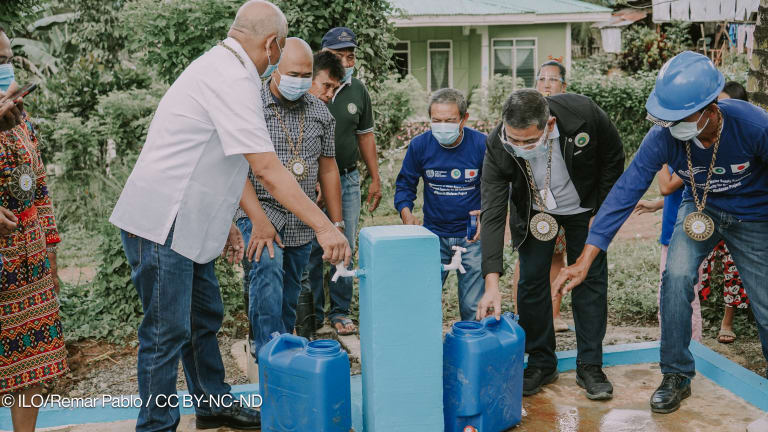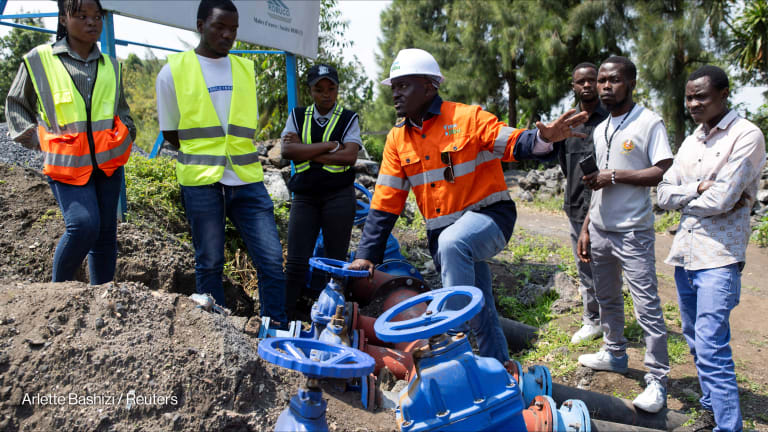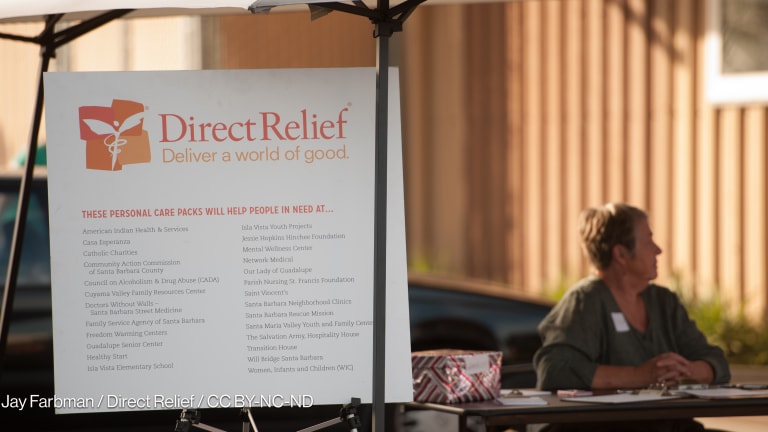
More than a month into the era of sequestration, no one is certain how budget austerity is going to affect the aid community.
Amid much fear and speculations, the U.S. Agency for International Development has so far only said it is considering cutting payments and delaying or terminating agreements.
As always, there’ll be winners and losers, because cuts won’t be spread evenly across programs, thus affecting U.S. implementing partners differently depending on their focus areas and geographical reach. (In his just-released 2014 budget request, for instance, President Barack Obama indicates he wants to cut funding for Iraq, Afghanistan and Pakistan, but boost funding for Partnership for Growth Countries, among others.)
But there are other clues on which aid groups may have the most to lose in Washington’s age of austerity.
Devex gathered publicly available documents – mainly filings from the Internal Revenue Service as well as USAID contracts and grants databases – to paint a picture of mostly small and medium-sized NGOs whose dependence on U.S. aid, to a large extent, leaves them exposed to the impact of sequestration. (Watch out for more coverage on the full spectrum of U.S. aid implementers, including the many consulting firms which work abroad with USAID and a variety of other government agencies.)
>> Download the financial exposure data sheet here.
Among the hardest hit NGOs won’t be giants such as World Vision, a $1-billion group with a diversified portfolio of donors, but rather smaller organizations like IntraHealth International, a $90-million NGO that gets about 80 percent of its revenue from the U.S. government.
Devex reviewed the 2011 tax filings of 51 NGOs and compared their revenues against their total obligated money at USAID. Where necessary, we requested data directly from the organizations. Data from 2012 was available only sporadically.
Our survey does not capture all USAID partners; many of the agency’s largest contractors, for instance, did not respond to our requests for information. Still, our findings provides clues on which organizations are particularly vulnerable to U.S. aid cuts.
NGOs at risk
Without alternative funding sources, the operations of small and medium-sized NGOs can be severely restricted by the budget constraints that the United States may well face for the next decade. If sequestration continues, they will have to fight for the money.
Even this early, government data suggests that USAID grantmaking has slowed down.
The agency last month started committing about $685 million to 256 grants it signed this year. This is 14 percent less than last year’s obligation of $802 million for 351 grants in the same month.
Indeed, competition will be stiffer for small NGOs. Those that got between 40 percent and 80 percent of their revenues from USAID had a median annual revenue of $22.6 million. These range from groups like PCI Media Impact, which in 2011 got $900,000 or two thirds of its total revenue from the agency, to groups like ACDI/VOCA, a leading partner in agriculture, which received $104 million or 63 percent of its total revenue from USAID.
But even large groups like Population Services International, which got almost 39 percent of its $349 million revenue from USAID in 2011, according to its tax filings, are worried. (PSI’s financial statement for the same year lists $682 million in grants, fees, program income and other support, illustrating the varying ways to account for money flows. While some of the data cited in this report should be taken with a grain of salt, it can stil give a sene of certain aid groups’ dependency on USAID funding.)
The funding it gets from USAID usually complements other grants it receives from donors and without USAID funds, projects will be crippled, Carol Smith, the health group’s senior procurement director, told Devex.
Another concerned aid group is IntraHealth, whose President and CEO Pape Gaye said that “the impact of the sequestration could be devastating.”
IntraHealth is practically dependent on USAID funds to train health workers in developing nations, among other health projects it is handling.
“Our revenue is $90 million a year and 80 percent of that comes from the U.S. government,” Gaye told Devex.
Follow-on projects
IntraHealth sees the impact of sequestration potentially materializing in the organization’s biggest project, the $300 million Capacity Plus grant, which accounts for 15 percent of its annual revenue and trains health workers in 17 countries.
The NGO has received $40-50 million in the past three-and-a-half years. This year, the budget committed by USAID, according to Gaye, is in the vicinity of $10-20 million.
“Of course, we are hoping they won’t come back and say, sorry,” Gaye said, “which is a good possibility.”
The project has one-and-a-half years to go. These days, IntraHealth is busy preparing its proposal for a follow-on project worth between $300 million and $500 million.
“If you don’t have a follow-on project, it would be like we have invested so much time and money for nothing,” Gaye said.
But the project might not happen the way the group would prefer, he explained: “They might delay it. They might reduce the size of it. They might decide that a global project is not necessary. They can just focus on bilateral. … We are very, very nervous.”
Still, Gaye remains calm and confident that things will go smoothly.
In the hands of Washington
Small and medium-sized groups highly dependent on the U.S. government are finding it hard to reach out to other funding sources.
For dozens of NGOs which in 2011 received between $1 million and $50 million from USAID, that assistance accounted for roughly 22 percent (median value) of their revenues, according to data analyzed by Devex. These groups range from Minnesota-based HealthPartners Inc., which received $1.2 million, or 0.09 percent of its total revenue, to the Volunteers for Economic Growth Alliance, a consortium of nonprofit economic growth organizations, which received $9.8 million, or 79 percent of total revenue, from the agency in 2011.
Devex obtained data for three of USAID’s top implementing partners. The third one, apart from ACDI/VOCA and PSI, is the Save the Children Federation, which gained $102 million, or 17 percent of its total revenue, from USAID in 2011.
To cope with the challenging budget environment, USAID and its partners are exploring ways to change how they do business with one another.
PSI’s Smith said that the U.S. government has in the past considered awarding block grants (fewer but larger grants) to cope with reduced appropriations.
“They talk about using a formula or block grants. That’s really not a good approach when countries have different priorities and different needs,” Smith said.
He added: “Instead of having more, smaller awards, there are a few larger awards, which mean there are a lot more competitors going after fewer awards.”
Similarly, IntraHealth’s Gaye also predicts that as a result of sequestration, certain programs may be merged into bigger ones and thus organizations will have to compete even harder for fewer grants.
“Everybody is uncertain about the funding situation. Nobody wants to take a chance, so we are looking to see if the other ones come out, we should go after them as well,” he said. “We assume everybody is doing the same… and usually, the bigger the grant, the more attention it attracts.”
Just hours after releasing his fiscal 2014 budget plan, Obama signed an order setting in motion the next round of $109 billion cuts starting Oct. 1. The move, while expected, extends Washington’s age of austerity as much as it does the aid community’s funding woes.
Read more on U.S. aid reform online, and subscribe to The Development Newswire to receive top international development headlines from the world’s leading donors, news sources and opinion leaders — emailed to you FREE every business day.








